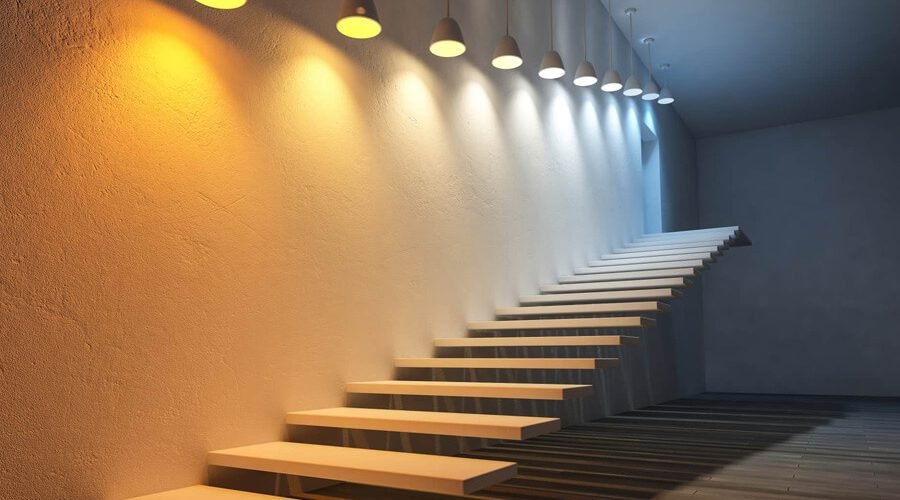Are you planning on doing electrical panel upgrades anytime soon, and do you plan on going the DIY route for it? Then you need to equip yourself with the right knowledge beforehand. For instance, knowing when and where low-voltage or line-voltage will be used can impact your operations.
While some people might think this knowledge it’s only for linesmen and technicians; it’s not uncommon for rational homeowners to be interested in knowing the differences between these two electrical terms.
In electricity, voltage is the measure of how much energy a power source can produce, and it’s measured in volts. This article will discuss the differences between low voltage and line voltage and how to decide on the best one for your needs.
Table of Contents
What is Low Voltage (12v or 24v) Lighting?
Low-voltage lighting uses electricity with lower voltages than standard household power. It’s sometimes called 12v lighting, or sometimes 24v lighting because it uses 12 or 24 volts as its source. Therefore, it requires an additional transformer to power the LEDs.
Thankfully, you don’t need to buy a separate transformer since most low-voltage lighting systems have an in-built transformer; hence, you can save the extra cost of purchasing a new transformer. Low-voltage lighting systems are known for their low power consumption.
Applications of Low Voltage Lighting
If you’re looking for places where low-voltage lighting can be used, there are many options for you. You can use low-voltage lighting systems in cases where running a full standard-voltage wire and electrical conduit is difficult. In cases where your system doesn’t have an in-built transformer, you can buy an easy-to-install remote transformer.
If you’re looking for something that will add a bit more light to your home without using much power, low-voltage lighting is worth considering.
What is Line Voltage Lighting?
Line voltage lighting is a type of lighting that doesn’t require an extra transformer to work. Instead, it runs on direct current from the main power source. Hence, it works with the standard 120 Volts input, making it the preference of many home and company owners.
Line voltage lighting is easy to install; however, it requires extra carefulness to prevent it from coming in contact with the power cable. Therefore they are mostly installed underground to prevent any havoc.
Applications of Line Voltage Lighting
Line voltage lighting systems are often used in industrial applications such as warehouses, factories, distribution centers, manufacturing plants, and research and development laboratories. These types of facilities need to have large amounts of natural light that can be controlled from an electrical source without having to install a separate HVAC system for ventilation purposes. Line voltage lighting systems are also ideal for small businesses that may not have the budget to install a large HVAC system but still need plenty of natural light throughout their offices or retail spaces.
Differences Between Low Voltage and Line Voltage Lighting
Safety
The safety of your lighting is a top priority; therefore, your home should have a safe and reliable supply of electricity. Low voltage lighting is a safer lighting system for your home. Line voltage lighting is also safe and reliable but needs to be installed by an electrician or trained technicians.
Voltage Drop
Voltage drop is the loss of voltage due to the resistance of wiring and other electrical components. Voltage drop occurs more frequently in low-voltage lighting systems than line lighting systems. The higher the voltage, the greater the loss of current through electrical components, which results in less light being produced.
However, you can reduce the possibility of voltage drop in low-voltage lighting systems by keeping the transformer close to the fixture. You can also distribute the wires across the fixtures for an even flow of power.
Investment Cost
The investment cost of lighting is a major factor in choosing between low-voltage and line-voltage lighting. The cost of installing a line-voltage system is much lower than conventional lighting systems. This can be explained by the fact that there is no need for a transformer, which means that there are no extra costs associated with installation.
Unlike line voltage lighting, low-voltage lighting also requires a higher number of lights and more expensive LEDs. As a result, the overall cost is lower compared to low-voltage systems.
Low-voltage lighting eliminates some of the hurdles associated with traditional electric lighting and comes with many benefits.
However, it’s essential to note that low voltage and line voltage are two completely different concepts, and there are situations where one fits better than the other. If you’re confused about the best one for you, ensure you contact an experienced electrician near you.





